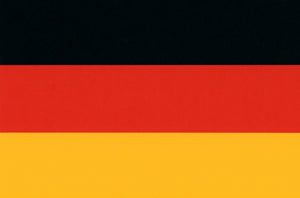Food storage: What containers do I need for storage and what fits where?

Or stay in our Polish store
Or stay in our Polish store
Or stay in our Polish store
Or stay in our Polish store
Anyone who spends time on Pinterest or Instagram surely knows them: perfectly organized pantries filled with shelves of matching containers. With beautifully arranged food and uniform labels - without a cardboard box or plastic bag within many kilometers. We all love these photos. However, the visual appeal is just one aspect.
Why not place boxes of cereal, pasta, and baking powder directly on the shelf in the pantry? Moving food is the first way to get rid of obvious clutter. Take a look in your cupboard, and you'll find that there isn't a single package or can of the same size in it. Thus, careful stacking is almost impossible. There are also packages (e.g., cornflakes) that have another bag inside the cardboard packaging. It's a waste of space!
Overview
Let's stick with the example of a cornflakes package: who hasn't experienced coming back from shopping and finding only a small leftover of cornflakes in the package the next morning? If you place them in a transparent container, you'll always know how much is left.
Longer shelf life and fewer mistakes
Placing food in airtight containers extends its shelf life. You also deter unwanted guests, such as weevils or moths, which can easily chew through paper bags. When a package leaves the store with pests (which is not that rare), you can exchange it right away.
easier to use
Transferring to containers not only helps control the amount but also makes it easier to use the food. It is much easier to scoop flour from a container than from a bag that has been torn and cannot be resealed tightly.
There are three criteria that storage containers should meet: They must be transparent, tightly sealed, and optimally utilize space in the cabinet.
Number 1: Why transparency?
In a transparent box, you can immediately see its contents as well as the level of food filling. Just cut out the expiration date (MHD) from the packaging and stick it on the container with tape. If you're in a hurry and don't want to write on additional stickers, this can also be helpful: Cut out the lid of the packaging or the label from the food bag and place it on top. The transparent lid makes it easier to read all the information. If you want to label the cans on the side because the containers are, for example, on a shelf, simply move the label down the wall of the container on the inside. The food will automatically hold it in place.
Number 2: Close tightly
Keyword for food moths: It is obvious that the tighter the lid, the better the protection against pests. It also prevents moisture from penetrating, keeping everything optimally dry and fresh.
Number 3: Make the best use of your cupboard.
Large jars often look very nice, but due to their round shape, they do not utilize space optimally. Replacing jars with square food storage boxes allows you to save about 20% of space. Additionally, square jars are easier to stack and combine with each other.
In reality, this topic is really exciting. Because when we buy food, it is usually measured in grams, while the sizes of food storage cans are given in liters. How does all this fit together? Do I now have to convert a kilogram of flour into liters? Is it the same as with water - 1 kilogram equals 1 liter? Unfortunately, it is not that simple. Unfortunately, one kilogram of flour is not equal to one liter of volume. And 1 kg of coffee beans takes up a completely different amount of space. Why can't you place a liter of milk, a package of flour (1 kg), and a kilogram of coffee beans next to each other? This is the best way to see the differences. To calculate the space required by a food product, bulk density is needed.
To avoid having to use a calculator every time or choosing the wrong container, below is a table.
It is important to consider the following issues: what do I want to transfer and in what quantity? If you only bake once a year and store a bag of flour, you need a smaller container than someone who bakes cakes twice a week. In that case, the can should be twice as large to store more.
And one more tip: I will stick to the coffee example. 500 g of ground coffee has a volume of 0.9 l. So one package fits perfectly in a one-liter container. But how does it look in reality? It is best to buy coffee when the can is not yet completely empty. As a result, there are still some leftovers in the package, and the new package is being replenished. In most cases, the new coffee fits exactly into the can. Don't do that. No, let's be honest: it never works, so there are always some leftovers in the coffee bag that then float around in the cupboard for many days.
So when it comes to food that barely fits in a storage can, it's better to choose a size larger. In this case, it will be a container with a capacity of 1.5 liters.
If you want to move your food, you need to not only carefully check what items you want to store in the can and how many you have, but also what your space requirements are. The first question is: Where are the containers? In a drawer? In a cabinet? On a shelf? How high can jars be stacked?
Whether it's a drawer or a cabinet, the first thing to do is to check the floor space and measure it accurately. After calculating this value (length x width), you can determine how many cans can be placed next to each other. This is relatively easy, as almost all LOFT cans have the same base area, and the others are, for example, double that. You can draw squares on a piece of squared paper and calculate your needs. However, be careful not to plan too rigidly! The cans have a slightly protruding edge at the top, and you need to be able to grip it to take it out.
Next, you can plan the height. Depending on the depth of the drawer or the height of the shelf/cabinet and the demand for different sizes, you can now check what cans are needed. Since LOFT cans can be wonderfully stacked in terms of size, you can also work with different sizes. For drawers, cans should be labeled from the top, and for cabinets and shelves - from the side.
Always leave a small space in the drawer or on the shelf for storing small food scraps (e.g., those that no longer fit in the can) or seasonal nutrients (e.g., in holiday baked goods) that do not have their own container.


